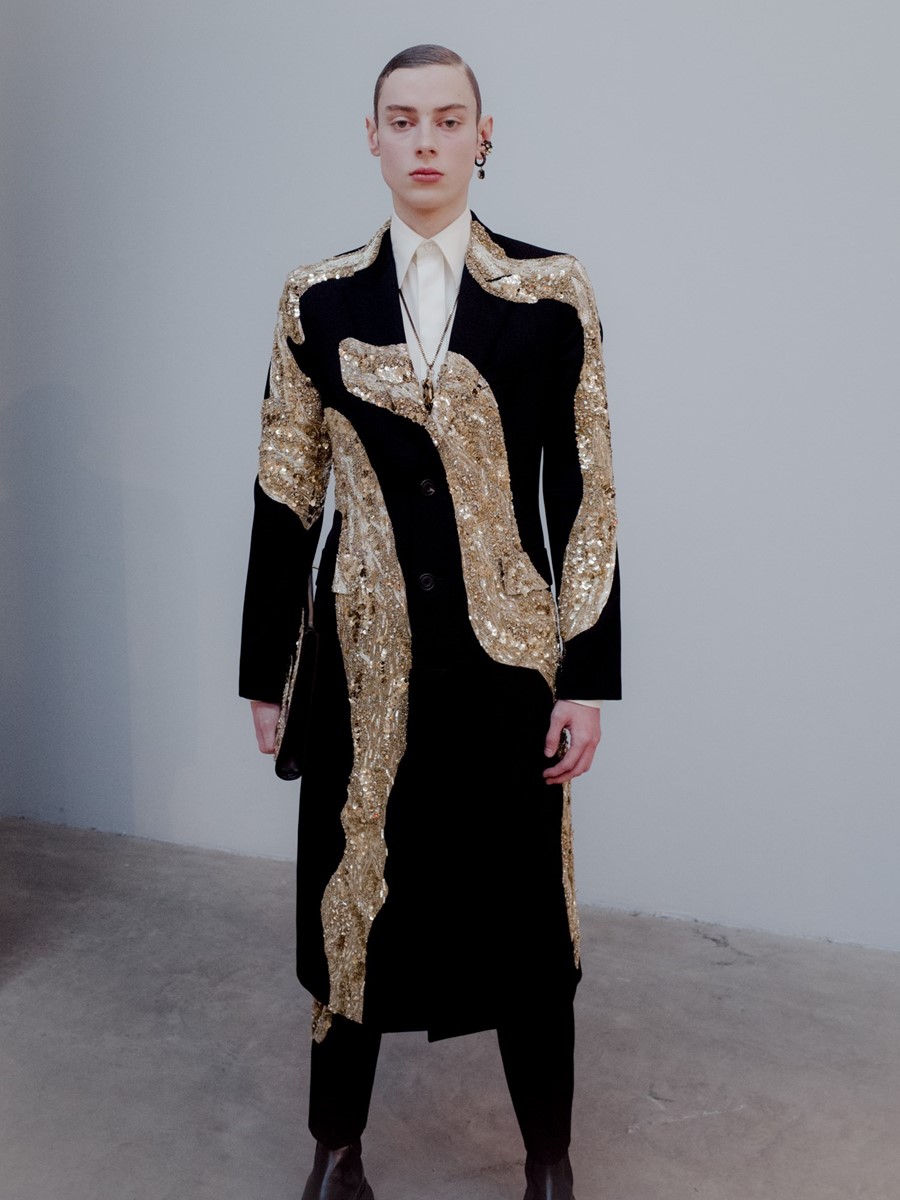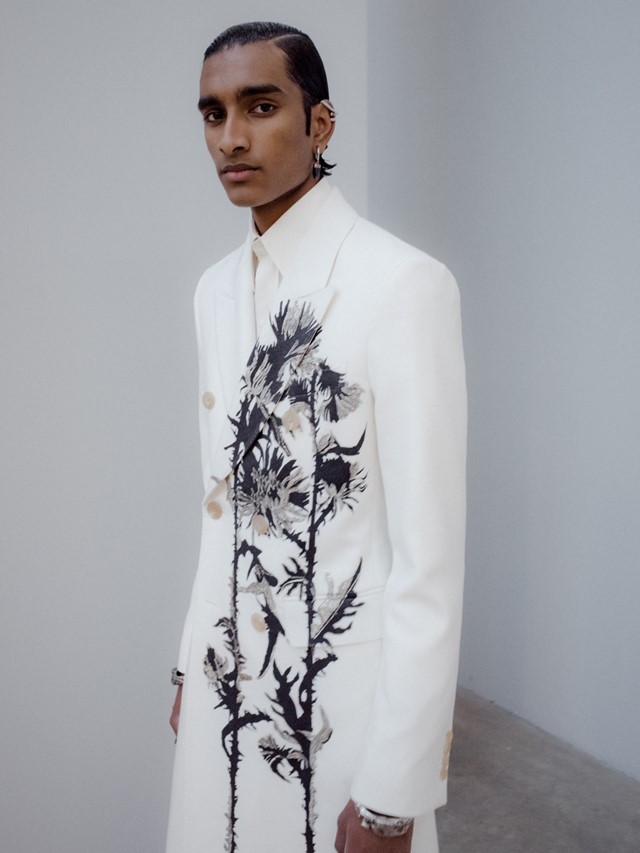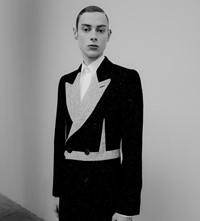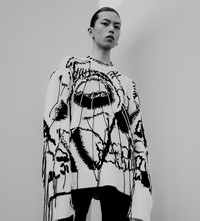Henry Moore Inspires Alexander McQueen’s Elegant New Collection
- TextTed Stansfield
Unveiled at Milan Men’s Fashion Week, Burton’s Autumn/Winter 2020 menswear offering drew on the English artist’s work and a centuries-old Irish technique
Henry Moore provided the foundation for the Alexander McQueen by Sarah Burton’s Autumn/Winter 2020 collection, unveiled this weekend at a presentation at Milan Men’s Fashion Week. Yet it wasn’t the English artist’s monumental bronze sculptures – for which he is best-known – that inspired Burton, but rather his drawings, and their unique “organic abstraction”.
Wool silk suits and coats were printed with works such as these – a drawing called A Three-Quarter Figure, produced in 1928, specifically – while the presentation itself was soundtracked by live music; songs which would have been played in Moore’s studio.
Drawing from other Britishisms – as is classic of Burton’s collections for McQueen – the collection took inspiration from Northern English landscapes (flint, rock, coarse earth, and thistles) and the idea of a “windswept earth stripped bare”. The influence of Art Nouveau was also present, along with arts and crafts – together contributing a sense of the “restrained elegance of Modernism”.
Elegance was here in spades, along with more of Burton’s signatures: a sharpness, a dark romanticism and, of course, a heady glamour – all captured in images by photographer and Another Man contributor Ethan James Green, taken in Clissold Park, in north-east London, and blown up on the walls.
Cut from double-duchess satin, the tailoring was rendered in bright, brilliant red, as well as black, embroidered with silver and gold-bullion thread – some in the form of a thistle, the national flower of Scotland, hand-drawn in the Alexander McQueen studio.
One of the standout looks from the collection was the “molten metal ore harness”, created using that same silver and gold bullion thread, and worn simply and beautifully with a pair of black duchess satin trousers.
Naturally, a sense of rebellion accompanied this heavy romanticism; something that was primarily expressed through the leather coats, motocross jackets and trousers.


Craftsmanship is something Burton and the team at McQueen are also known and celebrated for; incorporating centuries-old techniques into their designs, some of which are relatively unknown, or else on the brink of extinction. This season it was about beetling – a practice originating in Northern Ireland, first introduced by Hamilton Maxwell in 1725, which involves fabric (usually cotton or linen) being continuously pounded to create a flat but lustrous finish.
The team at McQueen decided to apply this technique to leather, pounding the material with specially created wooden beams – a process which took over four hours and resulted in the most luxuriant of leather coats. Making it even more special, the process was carried out by the last remaining practitioner of beetling in the whole Emerald Isle; a man named William Clark.
It’s this uncompromising and unimaginably considered approach that elevates Alexander McQueen’s men’s collections to something that seems beyond menswear, bordering on couture.
















